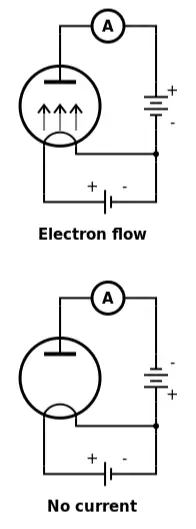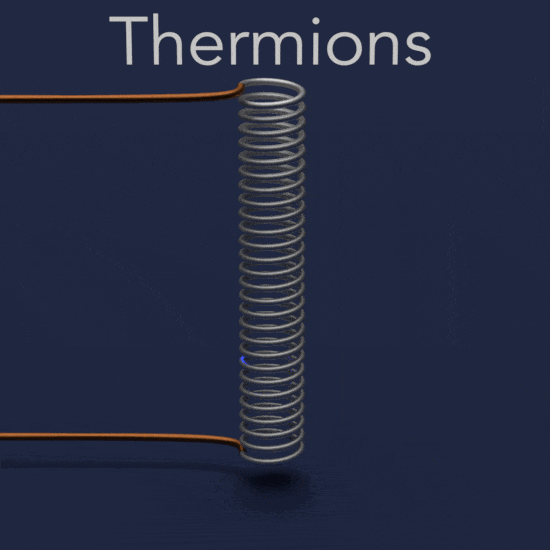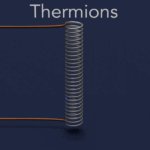30-second summary
Thermionic Emission
Thermionic emission (archaically known as the Edison effect) is the flow of charged particles (electrons or ions) called thermions from an electrode, caused by thermal vibrational energy overcoming the electrostatic forces holding electrons to the surface.
This process is crucially important in the operation of a variety of electronic devices (vacuum tubes) and can be used for electricity generation (such as thermionic converters) or cooling.

Thermionic Emission
Thermionic emission (archaically known as the Edison effect) is the flow of charged particles (electrons or ions) called thermions from an electrode, caused by thermal vibrational energy overcoming the electrostatic forces holding electrons to the surface. This process is crucially important in the operation of a variety of electronic devices (vacuum tubes) and can be used for electricity generation (such as thermionic converters) or cooling.

A thermionic energy converter is a device consisting of two electrodes placed near one another in a vacuum. One electrode is normally called the cathode or emitter, and the other is called the anode or plate. The hot cathode can be a metal filament, a coated metal filament, or a separate structure of metal or carbides or borides of transition metals.
Ordinarily, electrons in the cathode are prevented from escaping from the surface by a potential-energy barrier. When an electron starts to move away from the surface, it induces a corresponding positive charge in the material, which tends to pull it back into the surface. To escape, the electron must somehow acquire enough energy to overcome this energy barrier. At ordinary temperatures, almost none of the electrons can acquire enough energy to escape. However, when the cathode is very hot, the electron energies are greatly increased by thermal motion. At sufficiently high temperatures, a considerable number of electrons are able to escape. The liberation of electrons from a hot surface is called thermionic emission. Vacuum emission from metals tends to become significant only for temperatures over 1,000 K (730 °C; 1,340 °F).
The electrons that have escaped from the hot cathode form a cloud of negative charges near it called a space charge. If the plate is maintained positive with respect to the cathode by a battery, the electrons in the cloud are attracted to it. As long as the potential difference between the electrodes is maintained, there will be a steady current flow from the cathode to the plate. A thermionic generator is like a cyclic heat engine, and its maximum efficiency is limited by Carnot’s law. It is a low-Voltage high current device where current densities of 25-50 (A/cm2) have been achieved at a voltage from 1-2V. The energy of high-temperature gases can be partly converted into electricity if the riser tubes of the boiler are provided cathode and anode of a thermionic generator with the interspace filled with ionized cesium vapor.




